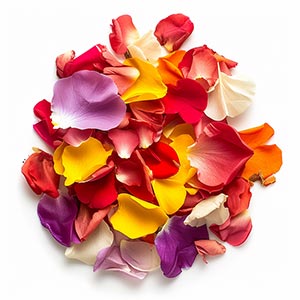Flower petals have been a cornerstone in the art of perfumery for centuries, embodying the essence of floral fragrances. Historically, various cultures have used flower petals to extract essential oils through methods like enfleurage and distillation. These practices date back to ancient civilizations, highlighting the timeless allure of floral scents. The use of flower petals in perfumery is diverse, with different flowers offering a wide range of scents. From the deep, intoxicating aroma of roses to the delicate, sweet whispers of jasmine, each petal contributes uniquely to a perfume's bouquet. This diversity allows perfumers to craft complex and layered fragrances, playing with notes to evoke different emotions and imagery. In contemporary perfumery, flower petals continue to inspire and shape fragrance trends. Advances in technology have expanded the ways in which their scents are captured, preserving the subtlety and richness of their aromas. The use of petals in fragrance composition remains a testament to their enduring appeal, symbolizing beauty, femininity, and nature's bounty.
Natural or Synthetic?
While natural flower petals are still used to extract essential oils for high-end perfumes, synthetic counterparts are common due to cost efficiency and sustainability concerns. Advances in chemistry have made it possible to replicate these natural scents accurately. However, for niche fragrances and luxury perfumes, natural petals continue to be preferred for their authenticity and depth.
Fragrance Families Flower Petals Most Commonly Found In
Show fragrances that contain Flower Petals as a note


